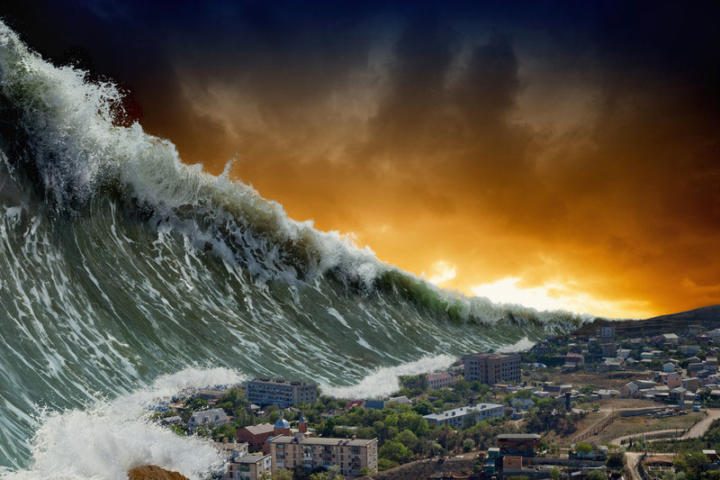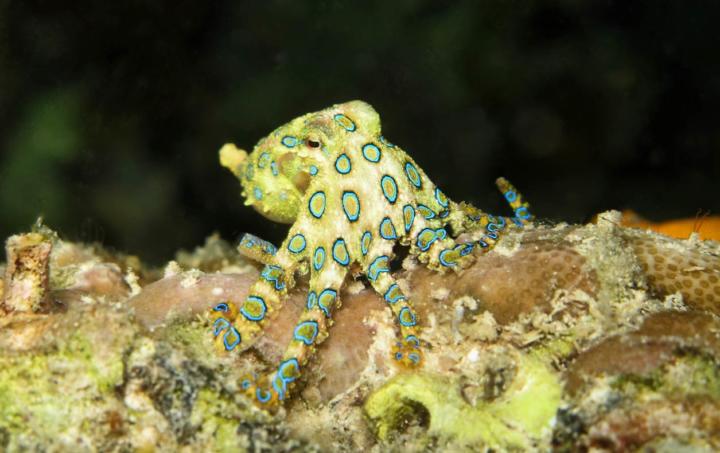Over the years I’ve written quite a lot about dangerous animals in various parts of the world. Much of the time I’ll start off with a region or group of animals and try to establish which are the deadliest. And often as not it is something of a struggle to actually find enough animals that are genuinely that dangerous. Quite often the animal will seem particularly lethal on paper, but when you look at the statistics You find it has killed one person in the last 30 years.
Australia is a great example of this. Everybody knows Australia has all the most dangerous animals on Earth, right? In theory maybe, but in fact hardly anybody is ever killed by any of these creatures. Unfortunately there are places where animals do cause deaths, and we are not just talking about a few.
This brings us to India, one of the largest and most populous countries on the planet. Not only does India have many potentially dangerous animals, it has the scary statistics to back up this with thousands of deaths each year. On figures alone this makes Indian animals the most dangerous in the world.
10. Monkeys
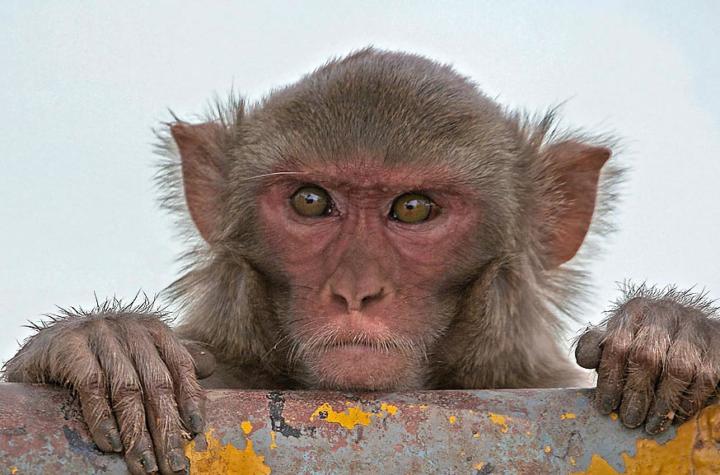
India is the home of the cheeky monkey, and in particular the rhesus macaque which is well known for its mischievous behaviour. These characterful, almost human-like creatures have long been a fixture on the streets of India’s cities and until relatively recently were considered mildly entertaining and nothing more than a minor nuisance. This all changed in 2007 when New Delhi’s former deputy mayor, Surinder Singh Bajwa, was attacked by monkeys in his home resulting in him falling to his death from a balcony.
Since then there have been a number of cases which have shown this was not an isolated incident and raising India’s urban monkeys to the status of public enemy number one. 2018 was a particularly bad year for simian-human relations with several high profile attacks. In Agra a 12 day old baby was snatched from its mother by a monkey which had broken into the house. Despite locals giving chase the baby was found dead nearby, having been repeatedly bitten.
In an even more sinister case in Uttar Pradesh, an elderly man was effectively stoned to death by a troop of monkeys using bricks from a nearby construction site. While these are extreme cases they do seem to be becoming more commonplace. Attacks by monkeys are now a daily occurence leading to one Indian politician to describe them as “terrorists”.
Bites from monkeys are second only to those from dogs in India and this is alongside a veritable monkey crimewave. The street monkeys are known to grab anything; food, bags, phone – and anyone resisting is liable to be on the receiving end of a set of intimidating looking canines.
Of course, as with most things, it seems that humans are almost entirely to blame for this outbreak of hostilities. As Indian cities rapidly expand into the surrounding forests these monkeys have become displaced. And once the moneys have got a taste for the easy pickings within their new urban home there is no going back.
9. Indian Rhinoceros
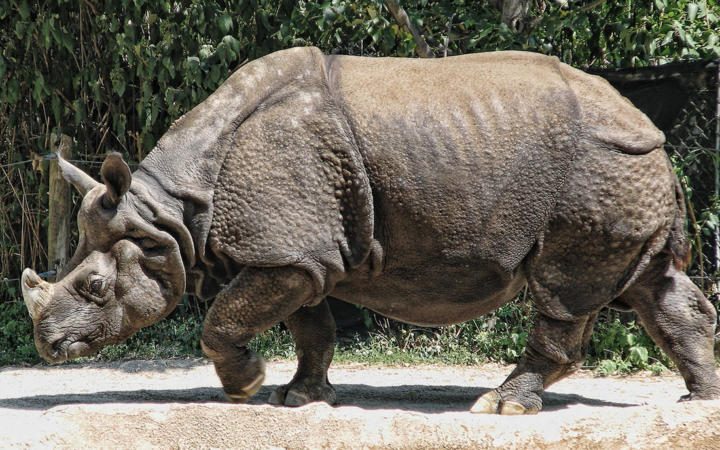
Ranked as the 5th largest land animal on the planet the Indian rhino is a tank of an animal. Amour-plated and powerful these prehistoric looking beasts can weigh in at 4 tons and stand over 6 ft (2 metres) tall at the shoulder. They’re no slouch either; a charging rhino can hit a top speed of 35 mph (almost 60 km/h) plus they are quite agile for such a lump of an animal.
Rhinos are often said to be particularly ill-tempered beasts which is partly true. They also have notoriously bad eyesight which is thought to play a part in their sometimes aggressive behaviour – charge first, ask questions later. To be on the receiving end of a charge from and Indian rhino would be like being hit by a truck… with a horn on the front. Nothing scares them and they’ll take on tigers, elephants and even actual trucks.
Despite their killer credentials it is actually the Indian rhino that is more at danger from humans. Their single horn is a valuable commodity used in Chinese medicine and they are at risk from poaching. Now an endangered species they only number a few thousand in northern India.
8. Indian Red Scorpion (Hottentotta tamulus)
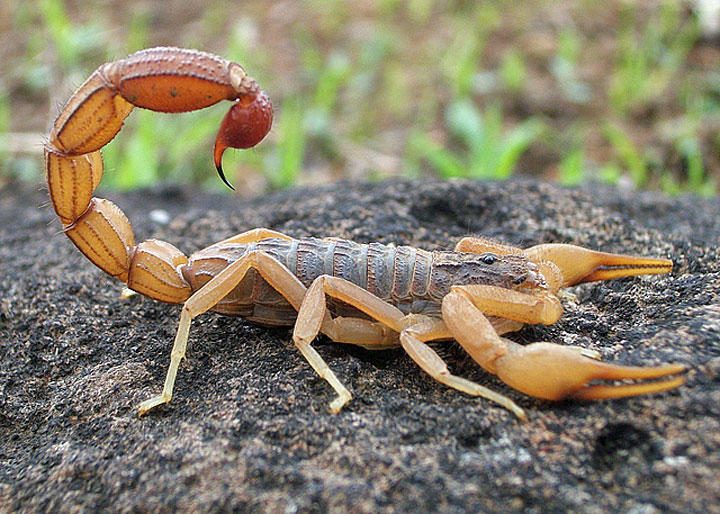
Red is one of nature’s warning colours and the fact this scorpion is distinctly reddish is no coincidence. Possibly the most dangerous scorpion in the world this is one arachnid you don’t want to get on the wrong side of.
This deadly scorpion is found throughout the Indian sub-continent and hunts at night, feeding on insects along with the occasional small lizard or mammal. Whilst a small size is often a marker of how dangerous a scorpion is the Indian Red is quite large at nearly 4 inches (9cm) in length. It is known to deliver its potent venom in large doses leading to sting fatality rates being anywhere between 8% and 40%. The higher end of the spectrum is more likely to be the very old and young.
Being stung an Indian Red scorpion is not going to be pleasant even if you are lucky enough to survive. Severe pain, vomiting, sweating and convulsions are the norm. More serious symptoms affect the heart and lungs with fluid on the lungs being the main cause of death within 24 hours.
7. Crocodiles
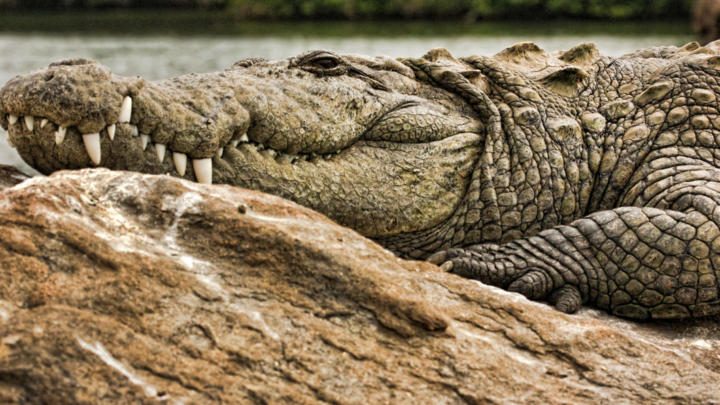
There are a few species of crocodile native to India. These range from the near harmless (but very odd-looking) gharial up to the mother of all crocs, the saltwater crocodile. Most common and widespread though is the mugger crocodile.
The name “mugger” doesn’t refer to the animal’s behaviour but is derived from the Hindi word for crocodile, “magar”. Described as a medium-sized crocodilian muggers can reach over 5 metres (16.5 ft) in length. Armed with the usual crocodile crushing jaws and enormous teeth these are potentially very dangerous reptiles.
As a rule mugger crocodiles feed on fish, reptiles and small mammals although on occasion larger animals such as deer may be taken as prey. It is however unusual for muggers to attack humans, but os opportunistic predators it does happen. On average there are around 20 attacks a year of which a third prove fatal.
As mentioned, saltwater crocodiles can be found along India’s eastern coast and around the Andaman Islands. Although they only number in the hundreds they do make their presence known from time to time. These are the biggest reptiles on Earth and individuals as large as 7 metres (23ft) in length have been recorded in Indian waters. Although much less common than the mugger, the saltwater crocodile is less discerning about what it eats and a more effective killer.
6. Dogs

As with any country certain breeds of dogs are going to pose a fairly small threat to the population at large, and as people will remind you, any type of dog can attack. However, this is not the main issue in India. One problem is the large number of stray dogs that roam the streets – these come into constant contact with humans which can lead to bites and attacks. The main problem though is rabies and India leads the world here. There are in the region of a staggering 20,000 deaths from rabies in India every single year and the primary cause of infection is dog bites.
Rabies is one of the world’s deadliest diseases. If not treated soon after a bite from a rabid animal the disease is almost always fatal. It affects the nervous system eventually reaching the brain where it causes the familiar symptoms such as acute pain, violent movements, uncontrolled excitement/mania and hydrophobia. Perhaps the best known symptom though is the foaming at the mouth caused by the excessive production of saliva.
Once these symptoms begin death usually occurs within 2 to 10 days.
There is an interesting and bizarre reason that rabies has become a bigger problem in India over the last 20 years. Referred to as the “Indian vulture crisis” it relates to the use of the anti-inflammatory drug diclofenac. This was administered to livestock to treat various conditions, but is lethal to vultures. As vultures would dispose of the carcasses of dead livestock they were in effect poisoned. This has lead to the near extinction of many species of Indian vulture, but on the other hand an explosion in the populations of other scavengers, including feral dogs.
5. Leopard
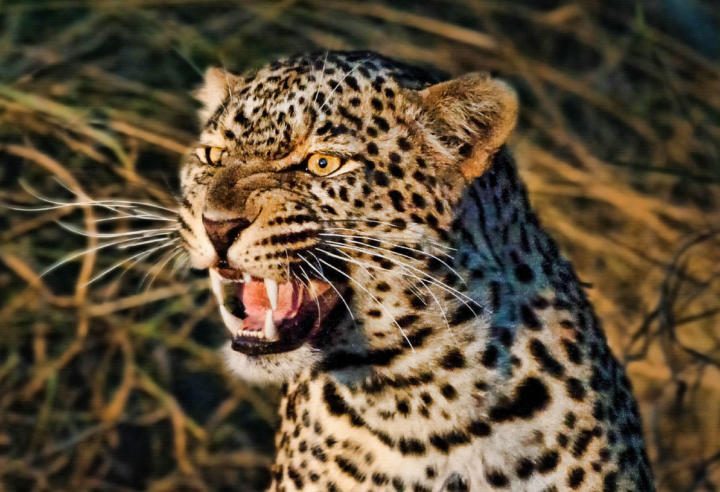
When it comes to big cats leopards may be the third biggest but they make up for this in power, agility and cunning – they really are like big cats. In the wild leopards tend to feed on small to medium-sized mammals including pigs and deer. They will also take livestock and stray dogs. Perhaps a little more alarming is their willingness to eat various non-human primates – perhaps it isn’t much of a leap to eating human primates.
Pound for pound the leopard is reputedly the strongest of all the mammals. Weighing in at up to 75 kg (170 lbs) these animals are capable of dragging prey weighing nearly twice as much themselves up trees to consume in safety. Their strength is also reflected in their bite – whilst only around 75% the force of a tiger or lion’s it is significantly more powerful as a ration of body weight. This bite is often used very effectively with the prey’s spine being crushed, skull being perforated or the main vessels of the neck being severed.
It is said that leopards are less likely to turn man-eater than lions or tigers. However, it is also said that the other big cats usually do so as a last resort due to injury or old age; leopards it seems will eat humans if they get a taste for us, even if they are perfectly healthy. Once they have turned leopards will continue to prey on humans until stopped. Their favourite way of killing is to sink their teeth into the neck, grab the shoulders with their front claws while disemboweling with their hind claws. The survival rate from such attacks is unsurprisingly low, particularly when you consider the bites also result in serious bacterial infections.
Perhaps the most notorious of all leopards was the Leopard of Panar, a male responsible for at least 400 deaths in remote Northern India during the early 1900s. Whilst the number of deaths attributed to this single leopard was particularly high it wasn’t an isolated incident. In another case, the so-called Leopard of the Central Provinces was reported to have killed more than 150 women and children over a two year period. Described as a “devilish cunning panther” this animal would kill in a different area each time with attacks occurring 20-30 miles apart.
It is estimated that between 1875 and 1912 around 12,000 people were killed by leopards in India.
4. Sloth Bear
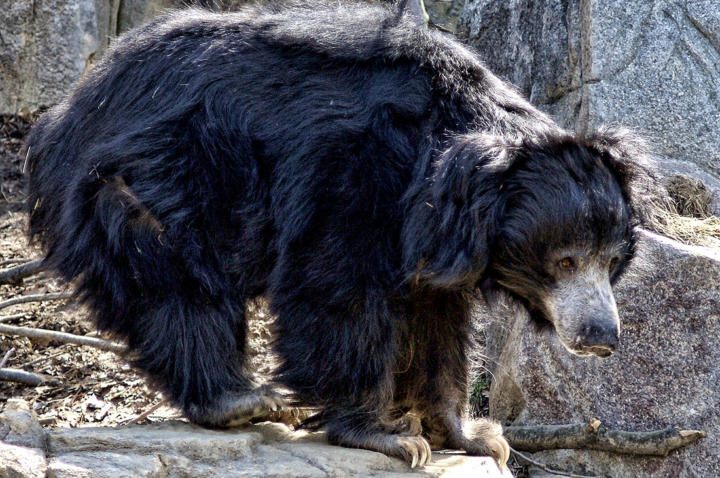
The sloth bear has something of a comical, almost clown-like appearance, which combined with its rather ungainly walk does not immediately strike fear into the casual observer. However, it probably should. Despite feeding largely on insects the sloth bear is one of the most feared animals in India. Even tigers will avoid them, whilst rhinos and elephants will happily kill them on sight.
These bears can grow to a fair size – up to 2 metres (6ft+) tall and up to 200 kg (400 lbs) but it is two things that make them so dangerous. First, they have massive, powerful sickle-like claws that would make Wolverine proud. These are primarily used for digging up termite nests – the bear’s main source of food.
The second characteristic of the sloth bear that makes it such a danger is its unpredictable behaviour. Nobody is going to predict whether one of these bears is going to walk away or rip your face off. And this is often what they do – sloth bears will go for the face most times with victims losing lips, noses and/or eyes.
For some reason these bears have something of a dislike for humans in particular. Some would say this is karma for the centuries of mistreatment such as being hunted or trained as circus animals. However, whatever the reason there is almost one sloth bear attack every week in India.
Perhaps the most notorious case involving one of these animals is that of the Sloth Bear of Mysore. In 1957 a bear went on something of a killing rampage leaving 12 dead and dozens more seriously injured.
3. Asian (Indian) Elephant
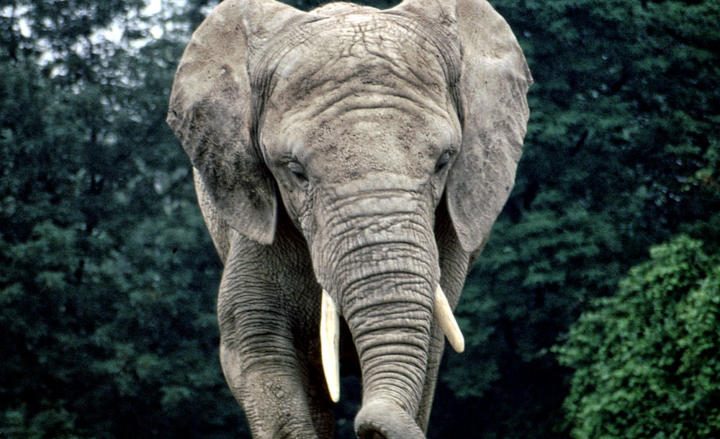
Despite having the reputation of being gentle giants it is estimated that in a bad year one person is killed by an elephant in India every day. It isn’t hard to imagine how an elephant may kill a human; the second largest animal on land these mighty beasts stand 3 metres (10 feet) tall and can weigh up to 8 tons. But why would these much-loved animals seemingly go out of their way to kill people, after all they are generally considered to be shy and retiring.
It seems the vast majority of elephant-related deaths occur on the edge of their habitat and are often linked to the elephants straying into the fields and villages. Given their size and strength, when a herd comes into contact with humans there is a strong possibility of someone getting trampled. Sometimes this is by accident but there is also some degree of human-elephant conflict; humans destroying the elephants natural habitat and elephants forced to raid crops and villages for food.
Quite a common theme is drunken elephants. Funny as this sounds it must be insanely terrifying having a dozen or more giants rampaging through your town or village seemingly set on causing maximum destruction. It seems that elephants do have a taste for alcohol and will raid stocks of rice beer or mahua liquor. It even appears they may be attracted by the smell.
Even without booze some elephants can become more dangerous. Male elephants experience a hormonal change which elevates their testosterone by up to 60 times. Musth as it is known can result in the bull elephant becoming highly aggressive and charging at practically anything, including inanimate objects and humans.
Female elephants can also become particularly dangerous when they feel their young are threatened. While they will usually curl up their trunks and trample their victim, male elephants are likely to gore their adversary with their tusks.
2. Bengal Tiger
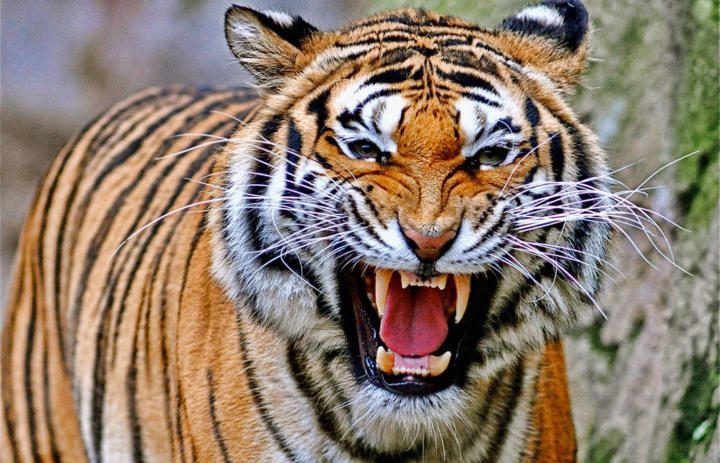
The tiger has long been revered as the ultimate man-eater. Stories from the days of Colonial India abound with villagers being slaughtered wholesale until a brave white hunter stepped in to shoot the beast. But how much truth is there in these tales and just how dangerous is the tiger?
Well, it seems that there is plenty of truth in the dangerous bit. The Bengal tiger is the biggest of the bunch weighing in at up to a massive 860 lb (390kg) and around 12 feet (3.9m) in length. And as you can see above, those teeth are pretty formidable, along with the matching set of claws. The usual hunting method of the tiger is to bring its victim down whilst latched onto the throat and thereby suffocate it. Prey can range in size from wild pigs right up to 1 ton buffalo. There are reports of tigers taking on several of the animals on this list, although they never seem to better elephants.
Obviously a human is no match for the true king of the jungle but as a rule tigers don’t think we’re worth the bother. Despite that tigers still hold the record for having killed more humans than any other wild mammal. During the 1900s it is estimated that tigers killed a thousand people a year in India alone. One individual tiger (the Tigress of Champawat) is said to have killed 430 people.
Whilst these numbers are much reduced in modern times there are still cases of man-eaters out there. The Sundarban mangroves between Bangladesh and Bengal are home to around 600 tigers. Around three deaths a year are still attributed to Bengal tigers here
1. Snakes (The Big 4)

Almost as iconic to India as the tiger is the infamous cobra. One of the deadliest snakes in the world this is but one of India’s killer foursome which are responsible for up to 50,000 fatalities each year. The so called “Big Four” consist of the following species: common krait, saw scaled viper, Indian cobra and Russell’s viper. These snakes aren’t just on a list for being potentially dangerous, they are the snakes that kill more people than any other vertebrates on Earth. Period.
Of the Big Four the cobra is perhaps the least dangerous with its venomous cocktail of neurotoxins, cardiotoxins and hemotoxins resulting in a bite fatality rate of between 6.5% and 30%. But where it may lack in toxicity the cobra makes up for in effort biting over 100,000 people per year.
Next on the list comes the common krait which has extremely strong neurotoxic venom. Among the top five most venomous snakes found anywhere it is perhaps fortunate that it is only small. Even so, if untreated the mortality rate is around 80% with death occurring within six hours of the bite. Another feature of the kraits bite is it is largely painless; whilst this may seem like a positive it can mean people don’t even realise they have been bitten. Indeed, the mostly nocturnal krait has commonly been known to bite people in their sleep – some of these never woke up.
Vying for top spot of India’s deadliest animal are the two vipers. Although the saw-scaled viper is notoriously bad tempered and delivers an agonising hemotoxic bite it cannot match Russell’s viper for the sheer amount of carnage. It is estimated that this common snake kills up to 25,000 people per year in India alone. Each snake possesses enough hemotoxic venom to kill 20 people so it is little surprise bites are often fatal.
Unlike with a krait bite you will know if you have been bitten by Russell’s viper. Excruciating pain soon leads to internal bleeding followed by a host of further complications as the venom reaches the body’s vital organs. Kidney failure, brain hemorrhage, blood poisoning or cardiovascular failure are all possible causes of death and those who survive are often left with permanent damage.

